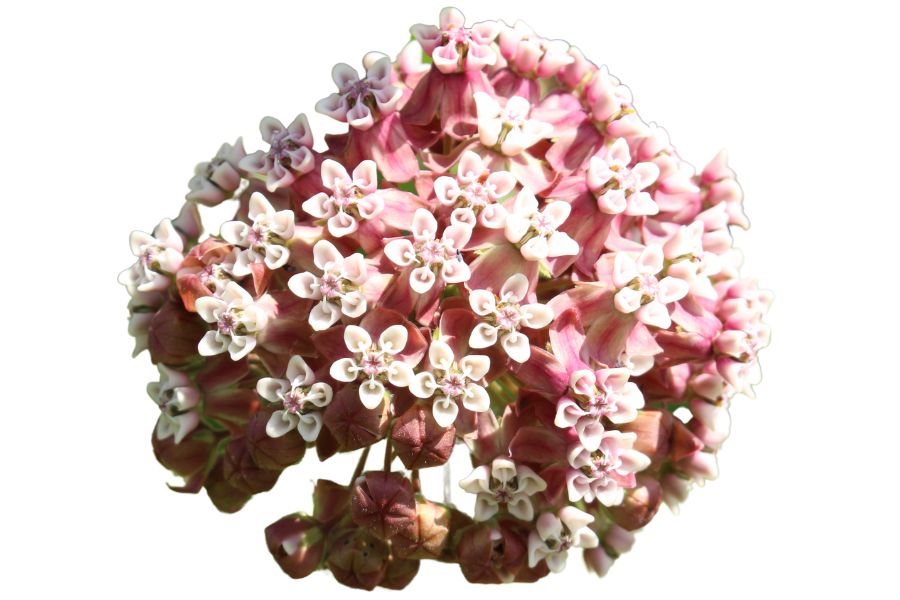South Carolina’s edible wild plants aren’t just abundant, they’re packed with value. In the right spots, you can gather flavorful oyster mushrooms clinging to fallen logs or find garlic mustard leaves that double as a bold spring green. These aren’t just additions to a meal, they’re ingredients with real culinary and practical worth.
The woods can offer more than just mushrooms. Trees like black walnut provide both nuts and useful husks, and yaupon holly leaves can be dried and brewed into North America’s only native caffeinated tea. Each plant has its own window of time and place, and some of the best ones are easy to overlook.
With a little knowledge, you can walk into a patch of forest and leave with ingredients most people pay good money for. The key is knowing when and where each plant thrives. And once you start to notice them, you’ll realize how much edible abundance is waiting out there.
What We Cover In This Article:
- What Makes Foreageables Valuable
- Foraging Mistakes That Cost You Big Bucks
- The Most Valuable Forageables in the State
- Where to Find Valuable Forageables in the State
- When to Forage for Maximum Value
- The extensive local experience and understanding of our team
- Input from multiple local foragers and foraging groups
- The accessibility of the various locations
- Safety and potential hazards when collecting
- Private and public locations
- A desire to include locations for both experienced foragers and those who are just starting out
Using these weights we think we’ve put together the best list out there for just about any forager to be successful!
A Quick Reminder
Before we get into the specifics about where and how to find these plants and mushrooms, we want to be clear that before ingesting any wild plant or mushroom, it should be identified with 100% certainty as edible by someone qualified and experienced in mushroom and plant identification, such as a professional mycologist or an expert forager. Misidentification can lead to serious illness or death.
All plants and mushrooms have the potential to cause severe adverse reactions in certain individuals, even death. If you are consuming wild foragables, it is crucial to cook them thoroughly and properly and only eat a small portion to test for personal tolerance. Some people may have allergies or sensitivities to specific mushrooms and plants, even if they are considered safe for others.
The information provided in this article is for general informational and educational purposes only. Foraging involves inherent risks.
What Makes Foreageables Valuable
Some wild plants, mushrooms, and natural ingredients can be surprisingly valuable. Whether you’re selling them or using them at home, their worth often comes down to a few key things:
The Scarcer the Plant, the Higher the Demand
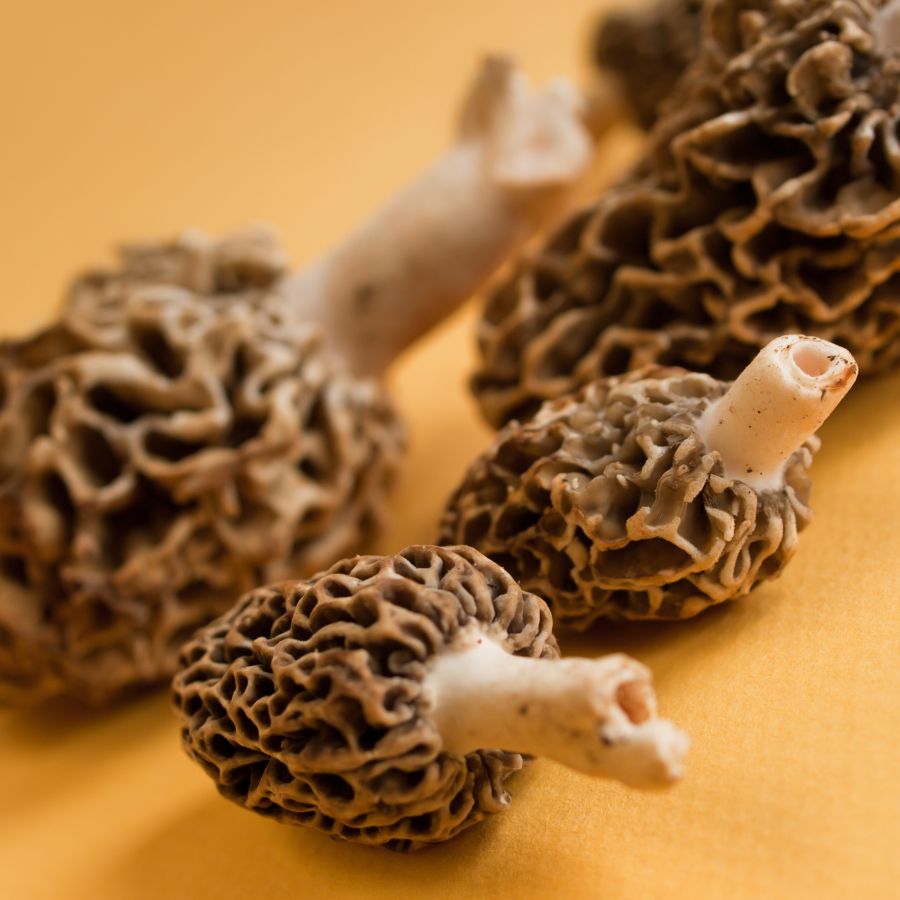
Some valuable forageables only show up for a short time each year, grow in hard-to-reach areas, or are very difficult to cultivate. That kind of rarity makes them harder to find and more expensive to buy.
Morels, truffles, and ramps are all good examples of this. They’re popular, but limited access and short growing seasons mean people are often willing to pay more.
A good seasonal foods guide can help you keep track of when high-value items appear.
High-End Dishes Boost the Value of Ingredients
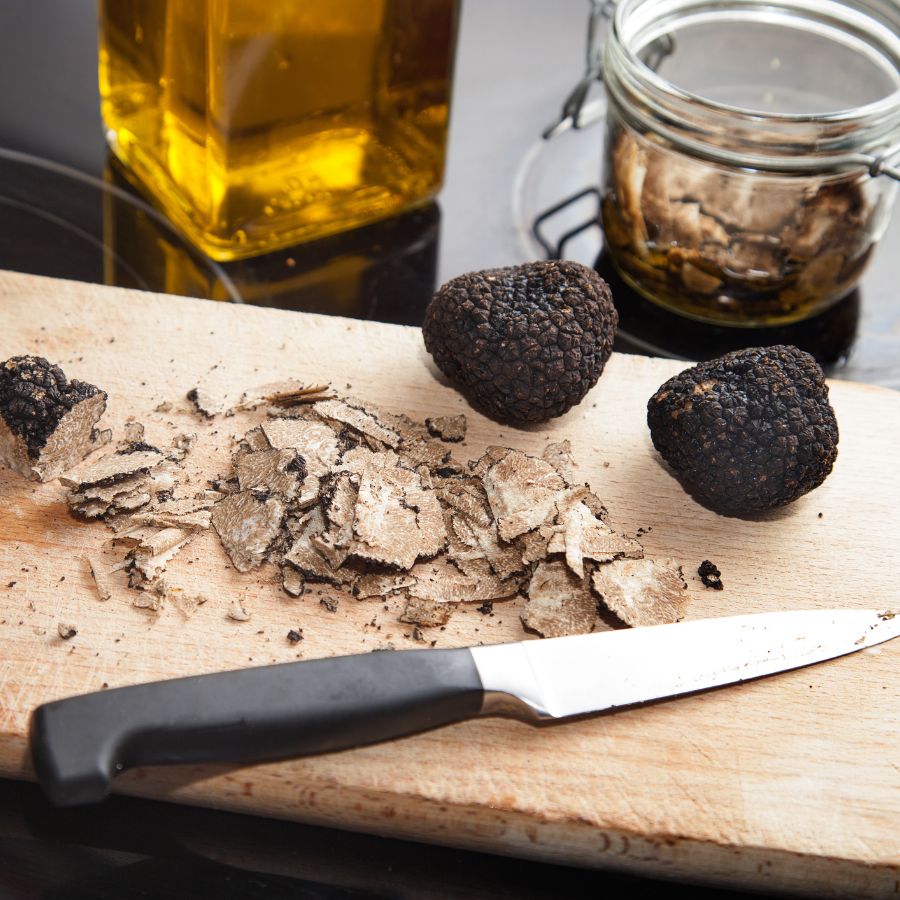
Wild ingredients that are hard to find in stores often catch the attention of chefs and home cooks. When something unique adds flavor or flair to a dish, it quickly becomes more valuable.
Truffles, wild leeks, and edible flowers are prized for how they taste and look on a plate. As more people try to include them in special meals, the demand—and the price—tends to rise.
You’ll find many of these among easy-to-identify wild mushrooms or herbs featured in fine dining.
Medicinal and Practical Uses Drive Forageable Prices Up
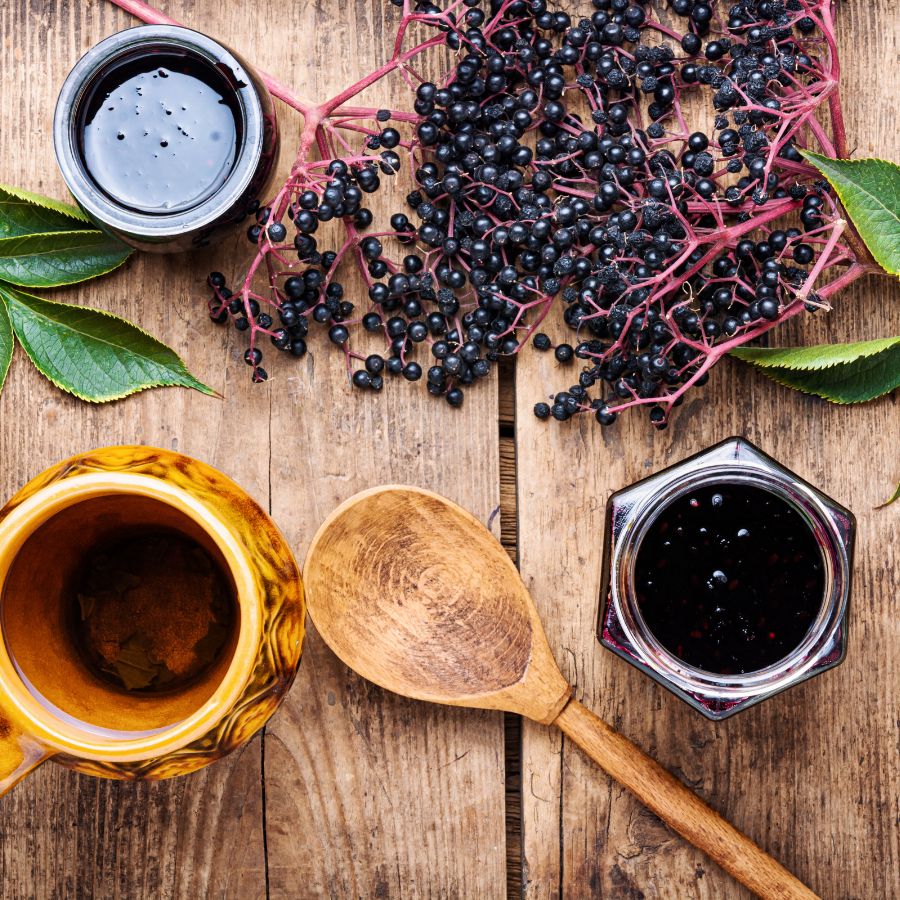
Plants like ginseng, goldenseal, and elderberries are often used in teas, tinctures, and home remedies. Their value comes from how they support wellness and are used repeatedly over time.
These plants are not just ingredients for cooking. Because people turn to them for ongoing use, the demand stays steady and the price stays high.
The More Work It Takes to Harvest, the More It’s Worth
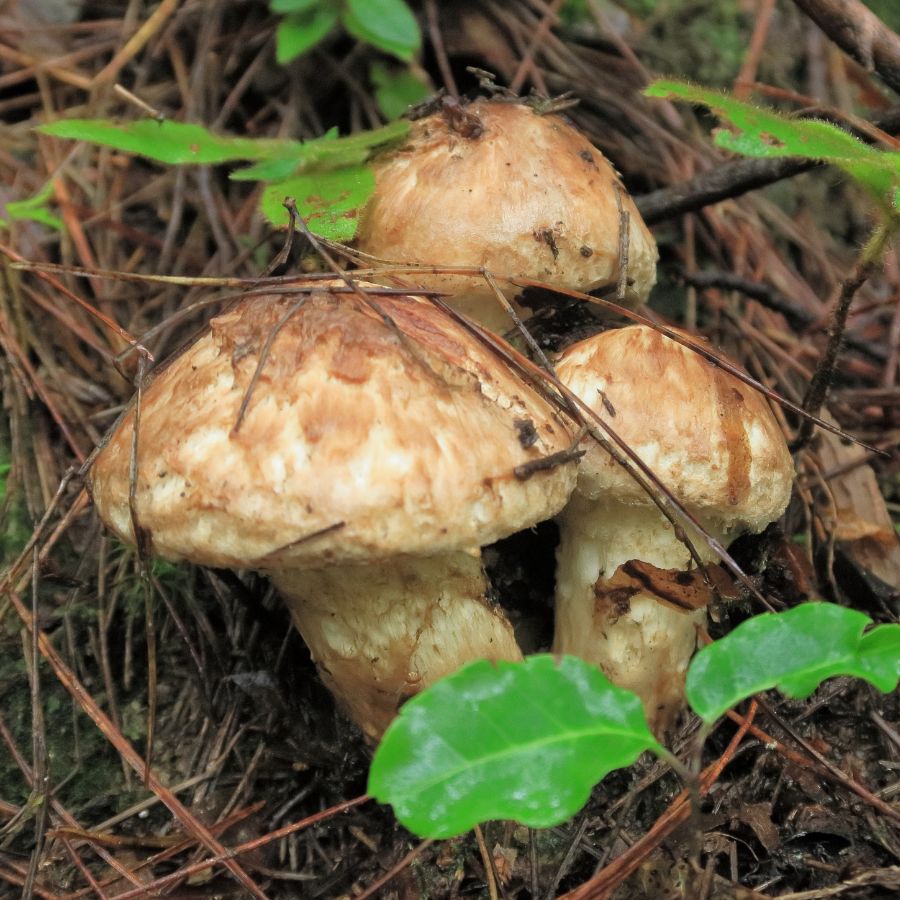
Forageables that are hard to reach or tricky to harvest often end up being more valuable. Some grow in dense forests, need careful digging, or have to be cleaned and prepared before use.
Matsutake mushrooms are a good example, because they grow in specific forest conditions and are hard to spot under layers of leaf litter. Wild ginger and black walnuts, meanwhile, both require extra steps for cleaning and preparation before they can be used or sold.
All of that takes time, effort, and experience. When something takes real work to gather safely, buyers are usually willing to pay more for it.
Foods That Keep Well Are More Valuable to Buyers
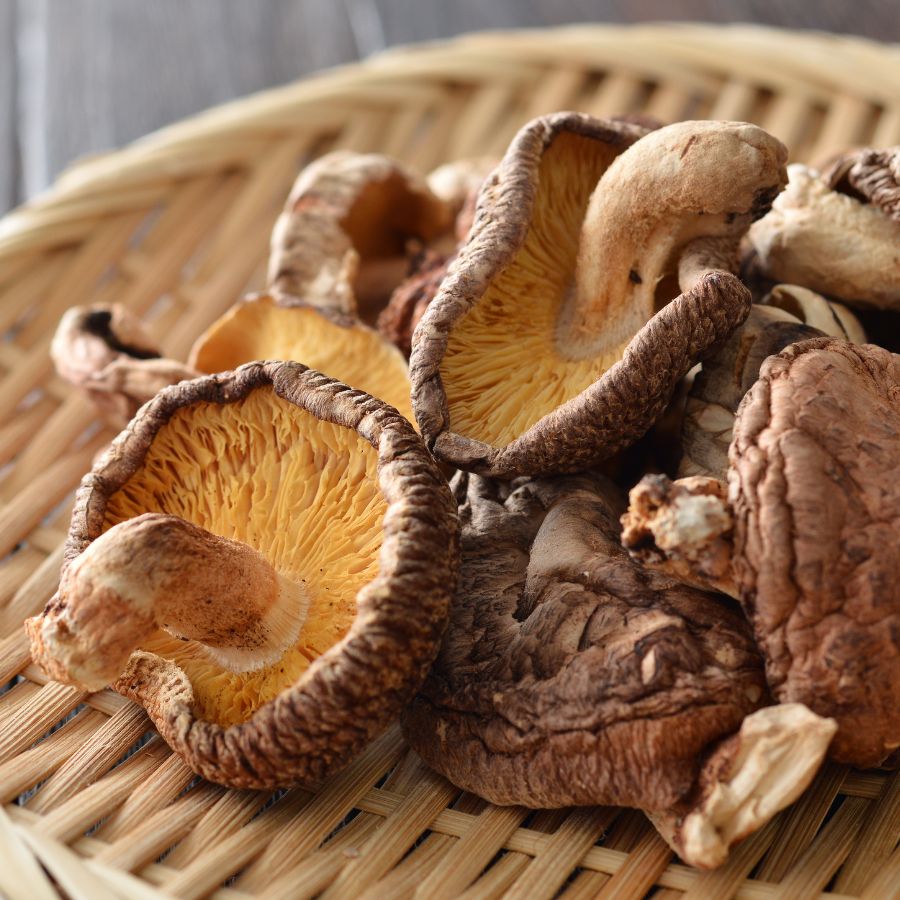
Some forageables, like dried morels or elderberries, can be stored for months without losing their value. These longer-lasting items are easier to sell and often bring in more money over time.
Others, like wild greens or edible flowers, have a short shelf life and need to be used quickly. Many easy-to-identify wild greens and herbs are best when fresh, but can be dried or preserved to extend their usefulness.
A Quick Reminder
Before we get into the specifics about where and how to find these mushrooms, we want to be clear that before ingesting any wild mushroom, it should be identified with 100% certainty as edible by someone qualified and experienced in mushroom identification, such as a professional mycologist or an expert forager. Misidentification of mushrooms can lead to serious illness or death.
All mushrooms have the potential to cause severe adverse reactions in certain individuals, even death. If you are consuming mushrooms, it is crucial to cook them thoroughly and properly and only eat a small portion to test for personal tolerance. Some people may have allergies or sensitivities to specific mushrooms, even if they are considered safe for others.
The information provided in this article is for general informational and educational purposes only. Foraging for wild mushrooms involves inherent risks.
Foraging Mistakes That Cost You Big Bucks
When you’re foraging for high-value plants, mushrooms, or other wild ingredients, every decision matters. Whether you’re selling at a farmers market or stocking your own pantry, simple mistakes can make your harvest less valuable or even completely worthless.
Harvesting at the Wrong Time
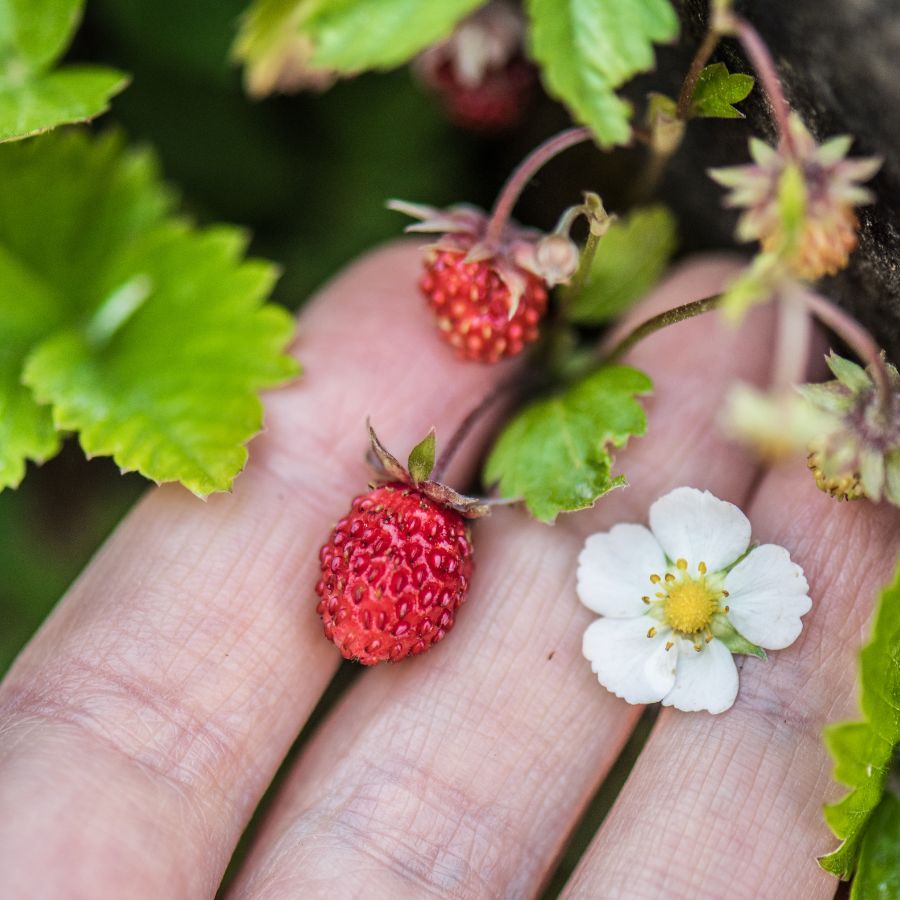
Harvesting at the wrong time can turn a valuable find into something no one wants. Plants and mushrooms have a short window when they’re at their best, and missing it means losing quality.
Morels, for example, shrink and dry out quickly once they mature, which lowers their weight and price. Overripe berries bruise in the basket and spoil fast, making them hard to store or sell.
Improper Handling After Harvest
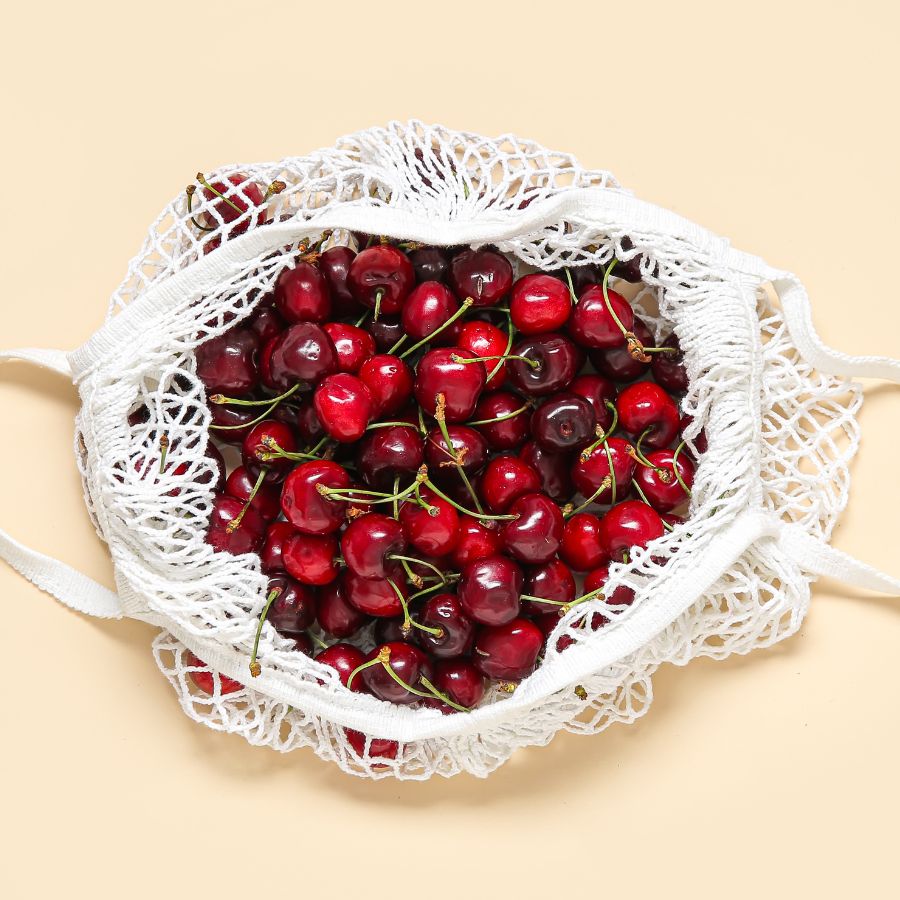
Rough handling can ruin even the most valuable forageables. Crushed mushrooms, wilted greens, and dirty roots lose both their appeal and their price.
Use baskets or mesh bags to keep things from getting smashed and let air circulate. Keeping everything cool and clean helps your harvest stay fresh and look better for longer.
This is especially important for delicate items like wild roots and tubers that need to stay clean and intact.
Skipping Processing Steps
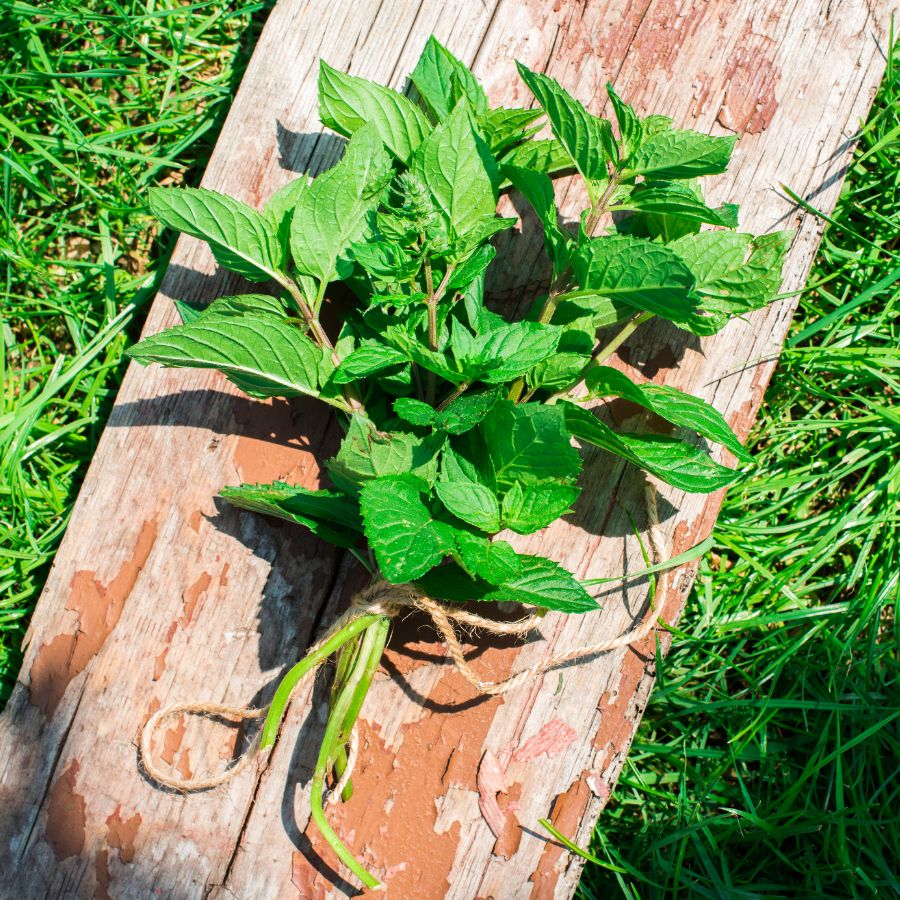
Skipping basic processing steps can cost you money. A raw harvest may look messy, spoil faster, or be harder to use.
For example, chaga is much more valuable when dried and cut properly. Herbs like wild mint or nettle often sell better when bundled neatly or partially dried. If you skip these steps, you may end up with something that looks unappealing or spoils quickly.
Collecting from the Wrong Area
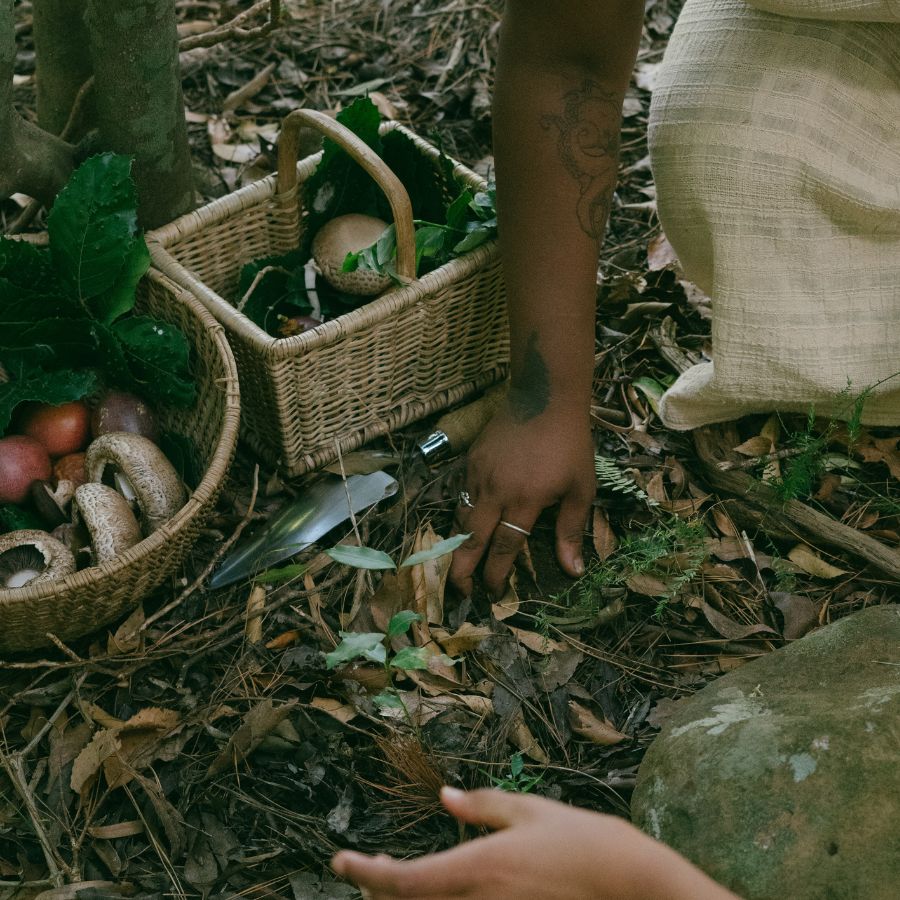
Harvesting in the wrong place can ruin a good find. Plants and mushrooms pulled from roadsides or polluted ground may be unsafe, no matter how fresh they look.
Buyers want to know their food comes from clean, responsible sources. If a spot is known for overharvesting or damage, it can make the whole batch less appealing.
These suburbia foraging tips can help you find overlooked spots that are surprisingly safe and productive.
Not Knowing the Market
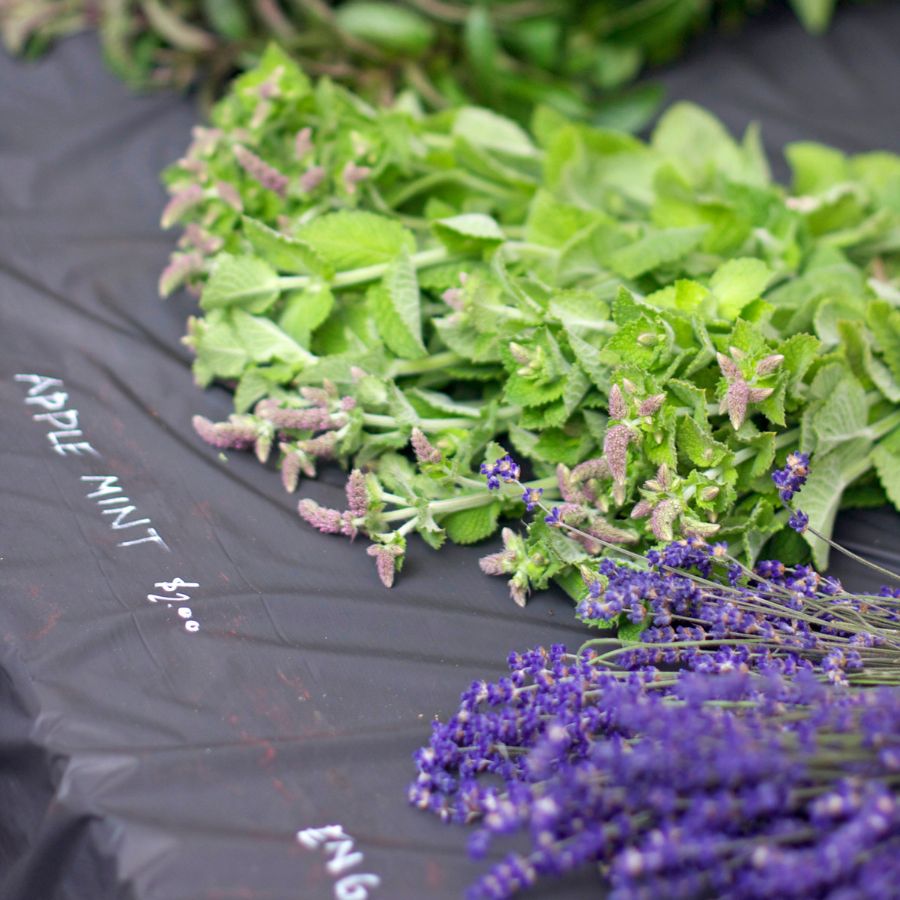
A rare plant isn’t valuable if nobody wants to buy it. If you gather in-demand species like wild ramps or black trumpets, you’re more likely to make a profit. Pay attention to what chefs, herbalists, or vendors are actually looking for.
Foraging with no plan leads to wasted effort and unsold stock. Keeping up with demand helps you bring home a profit instead of a pile of leftovers.
You can also brush up on foraging for survival strategies to identify the most versatile and useful wild foods.
Before you head out
Before embarking on any foraging activities, it is essential to understand and follow local laws and guidelines. Always confirm that you have permission to access any land and obtain permission from landowners if you are foraging on private property. Trespassing or foraging without permission is illegal and disrespectful.
For public lands, familiarize yourself with the foraging regulations, as some areas may restrict or prohibit the collection of mushrooms or other wild foods. These regulations and laws are frequently changing so always verify them before heading out to hunt. What we have listed below may be out of date and inaccurate as a result.
The Most Valuable Forageables in the State
Some of the most sought-after wild plants and fungi here can be surprisingly valuable. Whether you’re foraging for profit or personal use, these are the ones worth paying attention to:
Muscadine (Vitis rotundifolia)
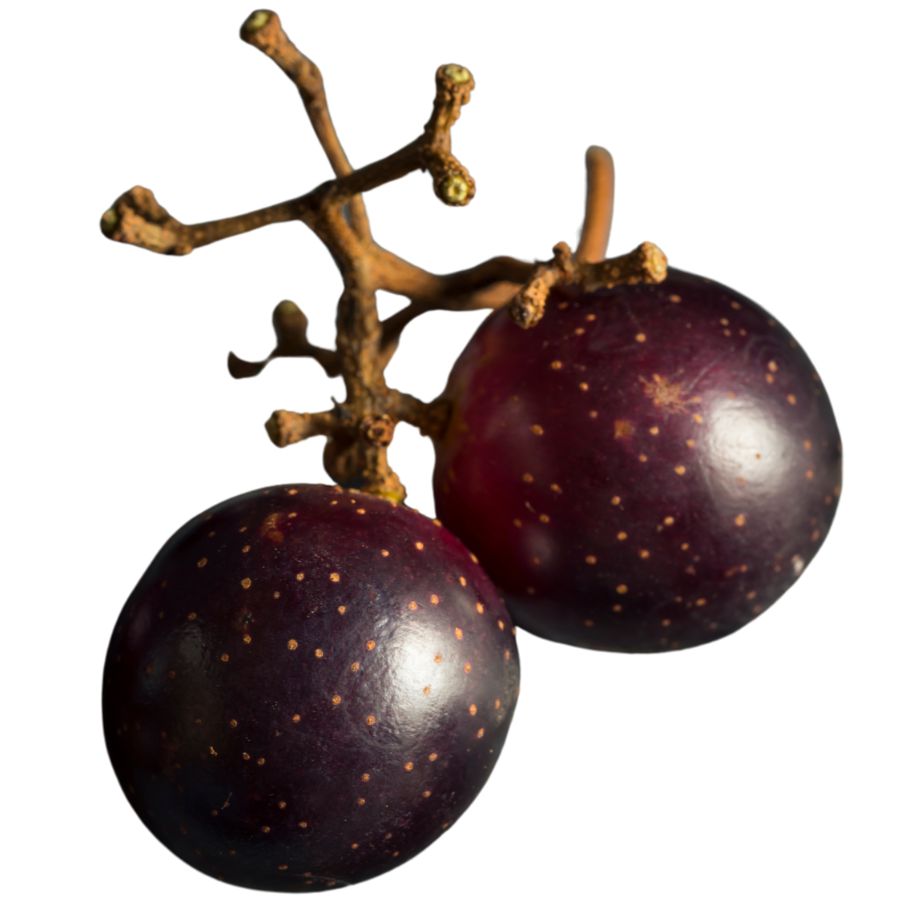
Muscadine grows as a vigorous vine and produces thick-skinned grapes with a bold, aromatic flavor. The edible part is the inner pulp, which is often pressed for juice or cooked into jams and jellies.
The skin is edible but extremely chewy, and the seeds are large and best removed if you’re cooking with them. Fresh muscadines are sweet, with a strong taste that leans toward earthy or floral depending on ripeness.
Moonseed is a lookalike vine that can be deadly if mistaken for muscadine—its single seed and lack of tendrils are good clues to tell them apart. True muscadines also have tendrils and multiple seeds per fruit, and their taste is distinctly sweet rather than bitter.
While the leaves and green fruit shouldn’t be eaten, ripe muscadine grapes are highly sought after for winemaking and preserve-making. Homemade muscadine wine and jam can sell for a premium due to the fruit’s strong flavor and limited regional availability.
Garlic Mustard (Alliaria petiolata)
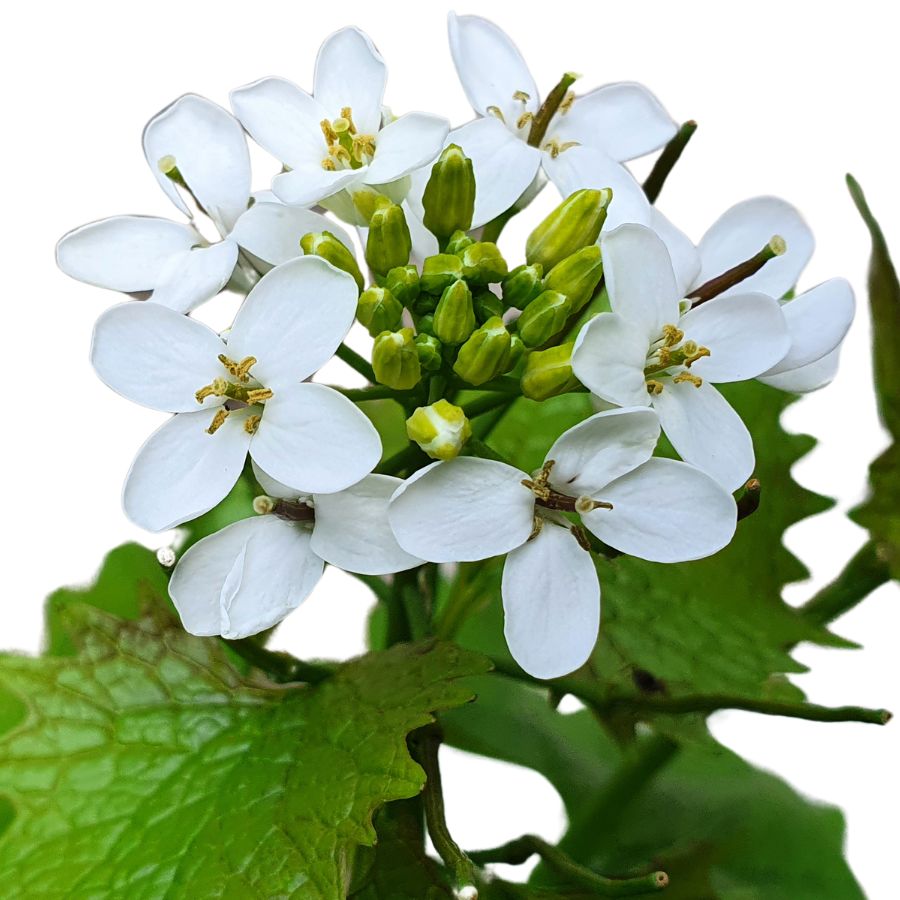
Garlic mustard has white flowers and jagged, dark green leaves that give off a strong garlic scent. The roots are slender and pale, and the plant grows in clumps along forest edges and disturbed ground.
Most foragers go after the young leaves, but the flowers and roots can be used too, especially in spicy dishes. It works well blended into sauces, cooked into stir-fries, or added fresh to sandwiches.
The taste is bold and garlicky with a slight bitterness, especially in older plants. When cooked, it softens but still holds its flavor better than many other wild greens.
While it has no real market price, garlic mustard is valued by foragers for its strong flavor and abundance. Be cautious of lookalikes like toothwort or some violets, which don’t smell like garlic and often have very different leaf shapes.
Chanterelle (Cantharellus cibarius)
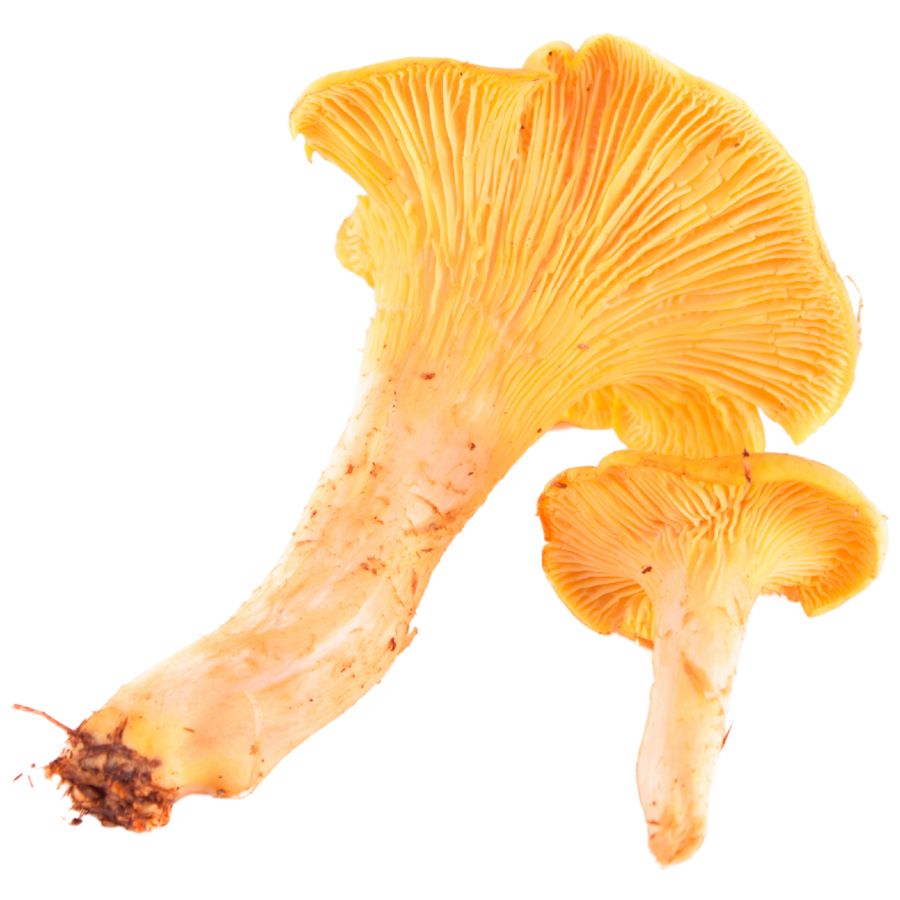
Golden chanterelles, also called egg mushrooms or girolles, are funnel-shaped and usually a bright yellow-orange with false gills that appear as deep, forked wrinkles. They have a fruity smell, almost like apricots, and a dense, meaty texture when cooked.
The part you want is the whole cap and stem, both of which soften nicely in butter or cream-based dishes. Their flavor is rich and peppery, which makes them popular in risottos, sautés, and soups.
A common lookalike is the jack-o’-lantern mushroom, which glows faintly in the dark and has true gills instead of shallow ridges. That one will give you stomach cramps, so pay close attention to the gill structure and color.
Fresh chanterelles can sell for over $20 per pound at farmers markets and restaurants, especially when demand is high. Their shelf life is short, but you can extend it by drying or pickling them soon after harvest.
Yaupon Holly (Ilex vomitoria)
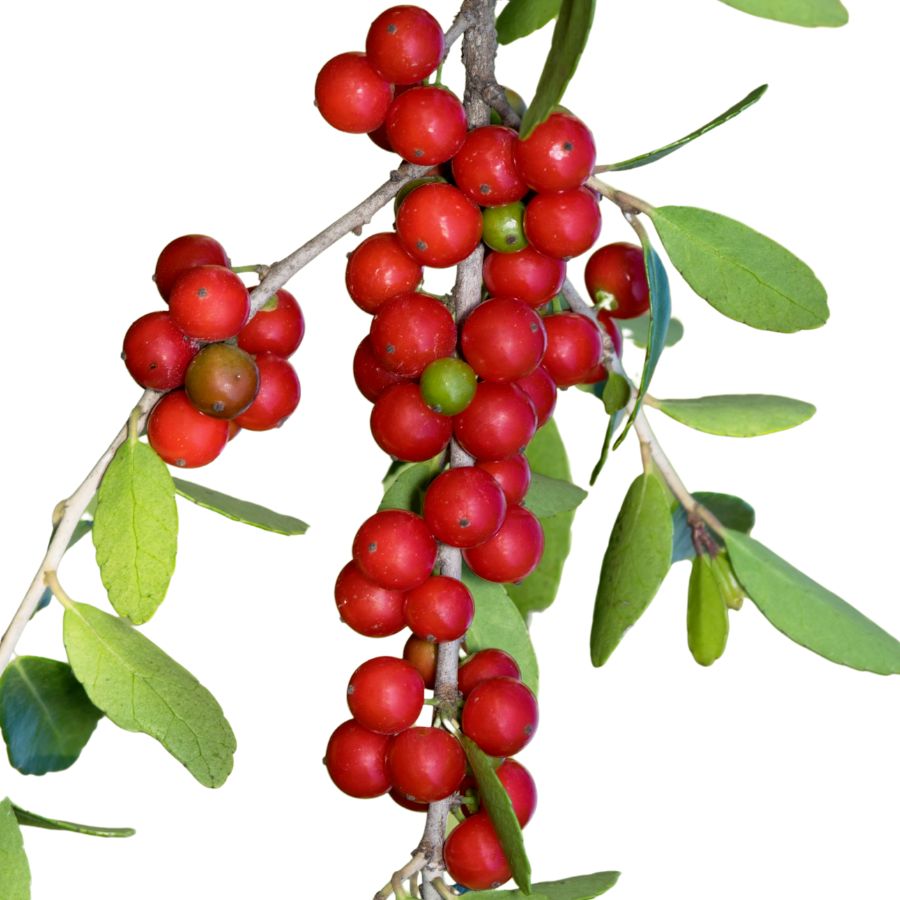
Yaupon holly is a small evergreen shrub with smooth-edged, oval leaves that grow alternately and have a leathery texture. Its shiny green leaves are the part you want to harvest, not the bright red berries, which are not edible.
The leaves contain caffeine and can be dried and steeped to make a stimulating tea that has a slightly earthy, roasted flavor. You can toast the leaves lightly before brewing to reduce bitterness and enhance the aroma.
This plant has a few lookalikes, including other holly species whose leaves are more spiny or whose berries may be toxic. Always double-check that the leaves are smooth-edged and that the plant is growing in shrubby clusters with pale gray bark.
Yaupon holly has gained popularity in the herbal tea market, especially as the only native North American plant with significant caffeine content. It can sell for over $60 per pound when processed and marketed as loose-leaf tea or tea blends.
Black Walnut (Juglans nigra)
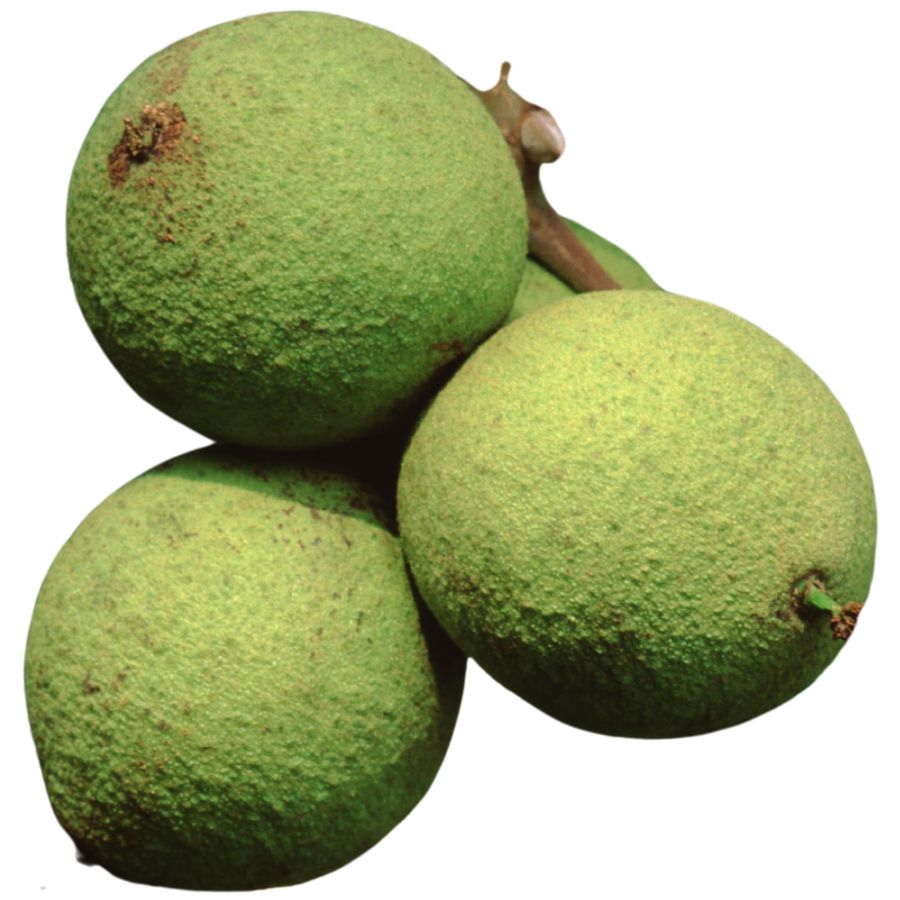
Black walnut grows a nut that’s prized for its strong, musky flavor and crunchy texture. The inner shell is extremely hard and often needs to be cracked with a vise or hammer to reach the oily, wrinkled seed inside.
Its nuts are most often roasted, chopped into desserts, or used in meat rubs and dressings. They’re also one of the few foraged tree nuts that can be stored long-term with very little processing.
The outer green husks leave a dark stain when bruised or broken open, and the nut itself is hidden inside a thick shell. While the fruit of the tree may resemble buckeye at first glance, black walnut leaves have a different shape and pattern, and buckeye seeds are toxic.
Prices stay high because harvesting takes time and experience, and the trees don’t lend themselves easily to large-scale production. Foragers and specialty food makers often pay a premium for wild black walnuts with intense flavor.
Maypop (Passiflora incarnata)
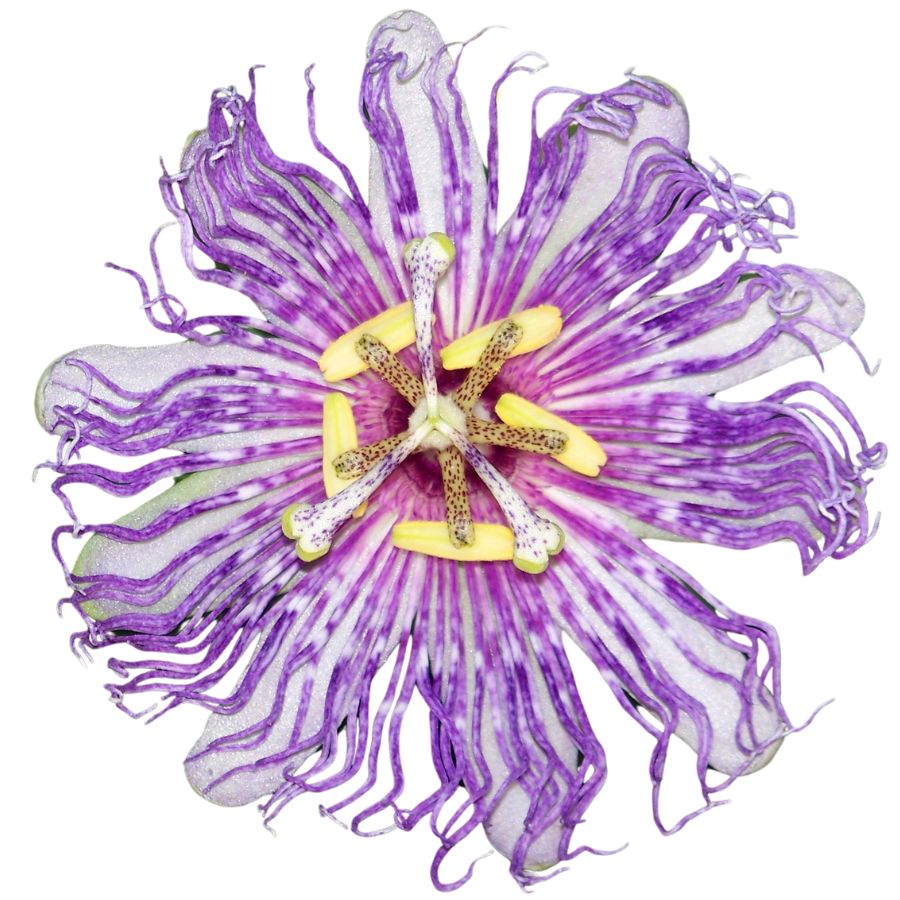
The maypop is a fast-growing vine with climbing tendrils, lobed leaves, and large purple-and-white flowers that turn into egg-shaped fruits. The fruit is the edible part, filled with a soft, pulpy interior that’s sweet, tart, and packed with crunchy black seeds.
People often eat the pulp raw or strain it into drinks, jellies, or syrups for its tropical flavor and smooth texture. It’s important not to eat the outer rind or the green, unripe fruit, which can cause digestive issues.
Maypop is sometimes mistaken for other passionflowers that don’t produce edible fruit, but the edible type has a round, wrinkly skin when ripe and a strong fruity scent. The leaves and roots aren’t used for food and shouldn’t be consumed.
Fresh maypops can sell for a few dollars each at specialty markets, especially in areas where they aren’t widely cultivated. Because the fruit doesn’t store well, its value comes from freshness and the effort it takes to collect it before it spoils.
Dryad’s Saddle (Cerioporus squamosus)
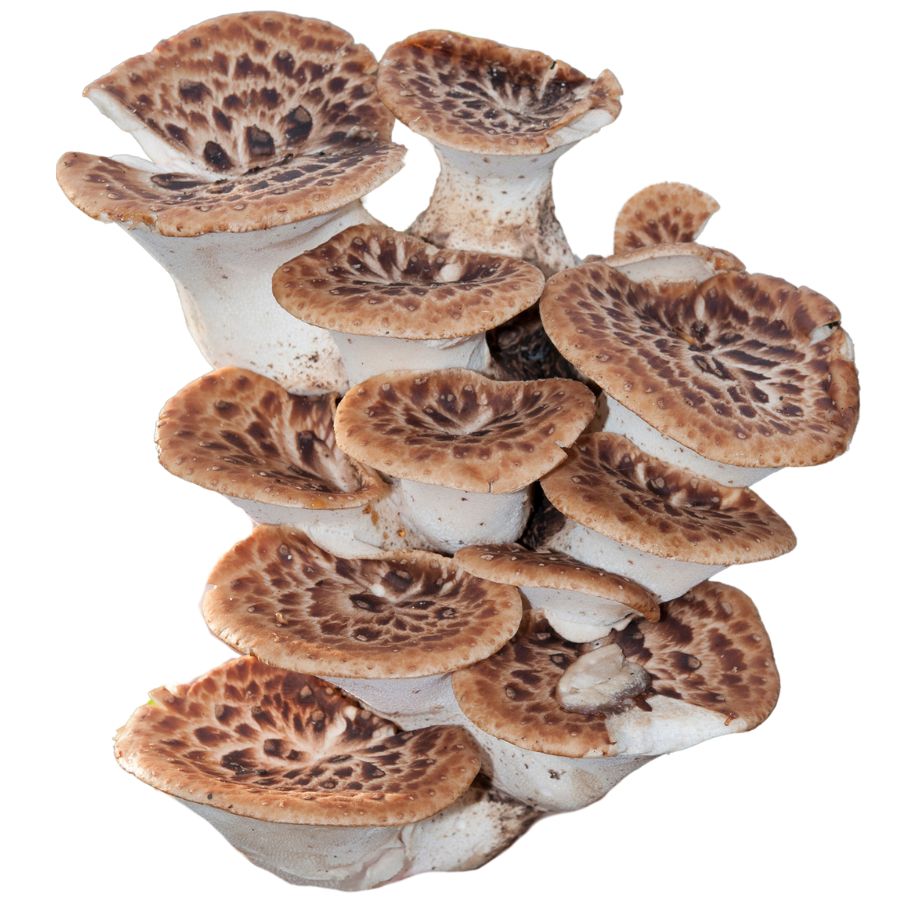
Dryad’s saddle mushrooms grow in fan-shaped clusters and have a tan surface covered in dark brown scales. The cap is thick and firm when young, but quickly becomes tough and leathery as it ages.
The only edible part is the outer edge of young caps, which has a crisp bite and a mild, cucumber-like flavor when cooked. Most people slice it thin and sauté it in butter or oil, sometimes adding it to soups or stir-fries.
Older specimens are usually discarded or used only to make broth because the inner flesh gets too woody to chew.
Always check the underside for white pores rather than gills, which helps separate it from toxic lookalikes.
Although it isn’t considered a gourmet mushroom, it’s valued for its abundance and size, with large caps sometimes weighing several pounds. It has little market value commercially, but it’s worth harvesting for personal use when young and fresh.
Lion’s Mane (Hericium erinaceus)
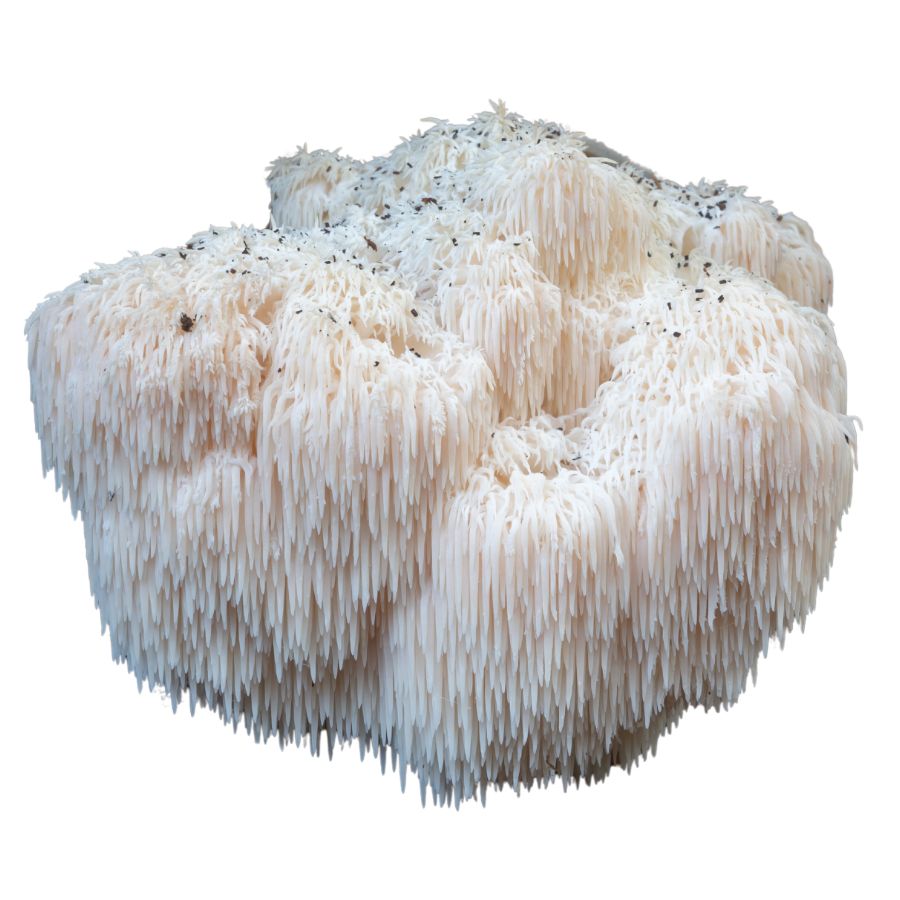
Lion’s mane mushrooms grow in white, shaggy clusters that hang like icicles from hardwood trees. The entire fruiting body is edible and has a soft, meaty texture that’s often compared to crab or lobster.
People value lion’s mane not just for the flavor but for how well it soaks up sauces in stir-fries, soups, or even pan-seared dishes. It’s usually sliced and cooked fresh, though it can be dried and rehydrated without losing much texture.
While it doesn’t have many dangerous lookalikes, some species of toothed fungi like bear’s head or comb tooth can resemble it. Those are also edible, but if a mushroom is discolored, mushy, or growing from the ground instead of wood, skip it.
Fresh lion’s mane sells for a high price at gourmet markets and restaurants because of its short shelf life and culinary demand. Its chewy bite and slightly sweet, nutty taste make it a favorite among chefs and home cooks alike.
Elderberry (Sambucus canadensis)
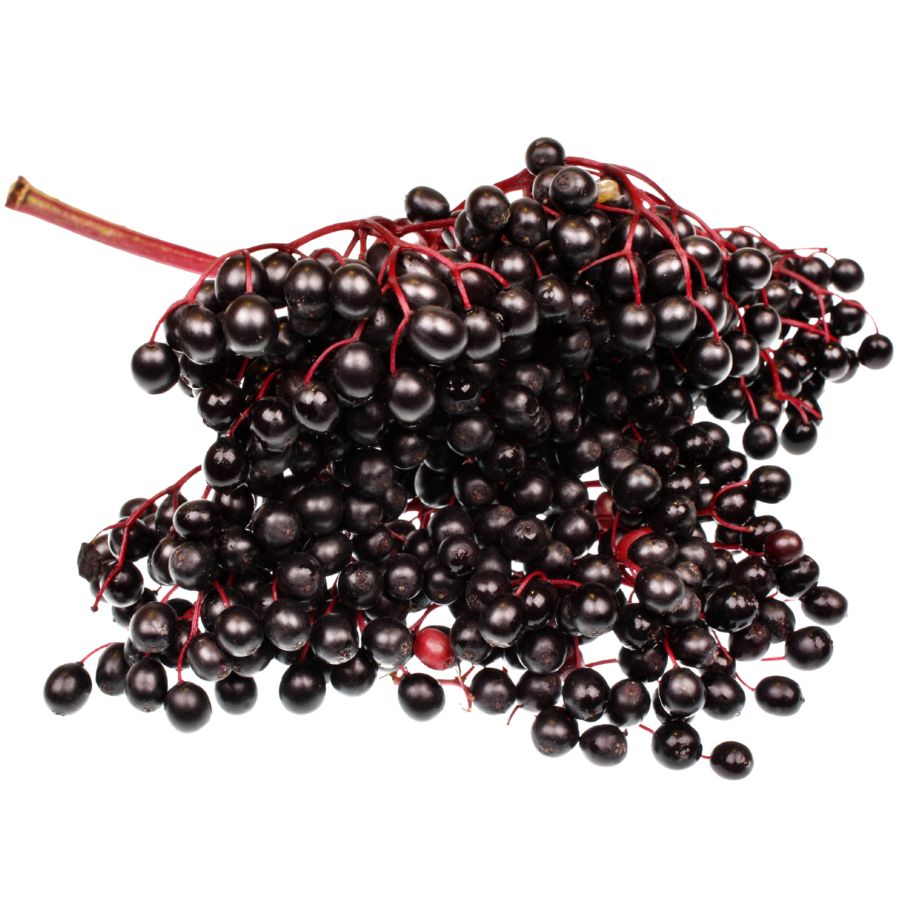
For centuries, elderberries have been gathered not just for food, but for making home remedies prized across the Southwest. Also called Mexican elder and tapiro, elderberry grows as a sprawling bush or small tree with clusters of tiny white flowers that turn into dusty blue-black berries.
There are toxic lookalikes you need to watch for, especially red elderberry, which has round clusters of bright red fruit. Elderberries grow in flatter, broader clusters and have a softer, more powdery appearance when ripe.
The berries have a deep, earthy flavor with a tart edge, and are usually cooked into jams, syrups, and baked goods to bring out their richness.
Make sure to avoid eating the raw berries, seeds, bark, or leaves because they can cause nausea unless they are properly cooked.
This plant stays valuable because the berries are used heavily in teas, tinctures, and syrups that people rely on for wellness, driving steady demand. Elderberries can also be dried and stored for months, making it even more profitable compared to foods that spoil quickly.
American Persimmon (Diospyros virginiana)
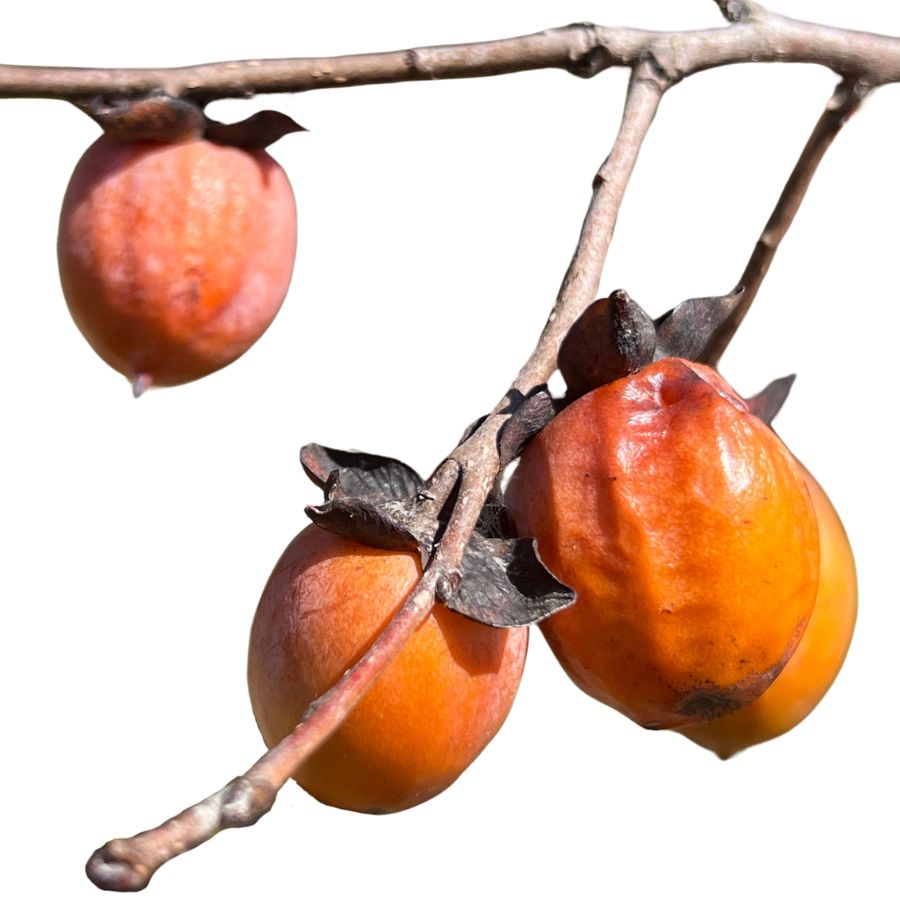
Persimmon fruit has a round shape and orange skin, usually with a slightly pointed end and a leafy cap still attached. It’s easy to bite into a ripe one and find it meltingly soft, with a flavor that’s both sugary and floral.
People sometimes confuse it with wild tomato-like fruits, but persimmons grow on hardwood trees and the fruit has a firmer skin. Avoid eating them when firm and unripe, as they contain tannins that cause a strong puckering sensation.
The pulp is the part most commonly used, and it’s great in baked goods or even frozen into a simple sorbet. Some cooks mash it into jam or dehydrate slices for a chewy snack.
Wild persimmons are valuable more for their flavor than for any consistent market price, though foragers and specialty sellers often get a few dollars per pound. The rich taste and the tree’s ability to grow in various soils make this fruit worth the effort to find.
Milkweed (Asclepias syriaca)
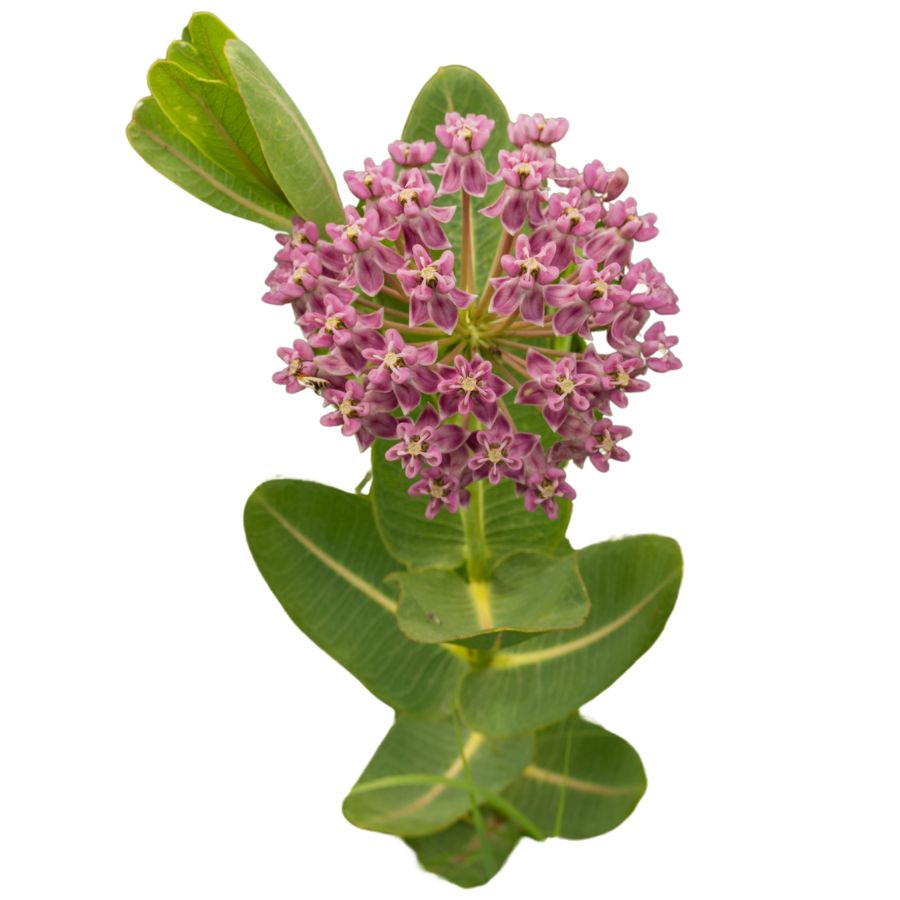
You’ll find milkweed growing in open fields, where it produces thick stems, wide green leaves, and heavy flower clusters. The unopened buds and tender pods are the most popular edible parts, though only after boiling them well.
It’s often confused with dogbane, which is poisonous and doesn’t produce the same sticky white sap when snapped. When cooked correctly, the pods become tender and taste a little like asparagus with a softer bite.
People usually prepare milkweed in soups, boiled side dishes, or even fried after parboiling to remove toxins. Boiling the parts in two or three rounds of water is the safest way to make them edible.
This plant isn’t widely sold commercially, but in local foraging communities, it’s a valued wild vegetable. If you’re careful with your identification and preparation, milkweed can be a surprisingly versatile wild food.
Cattail (Typha latifolia)
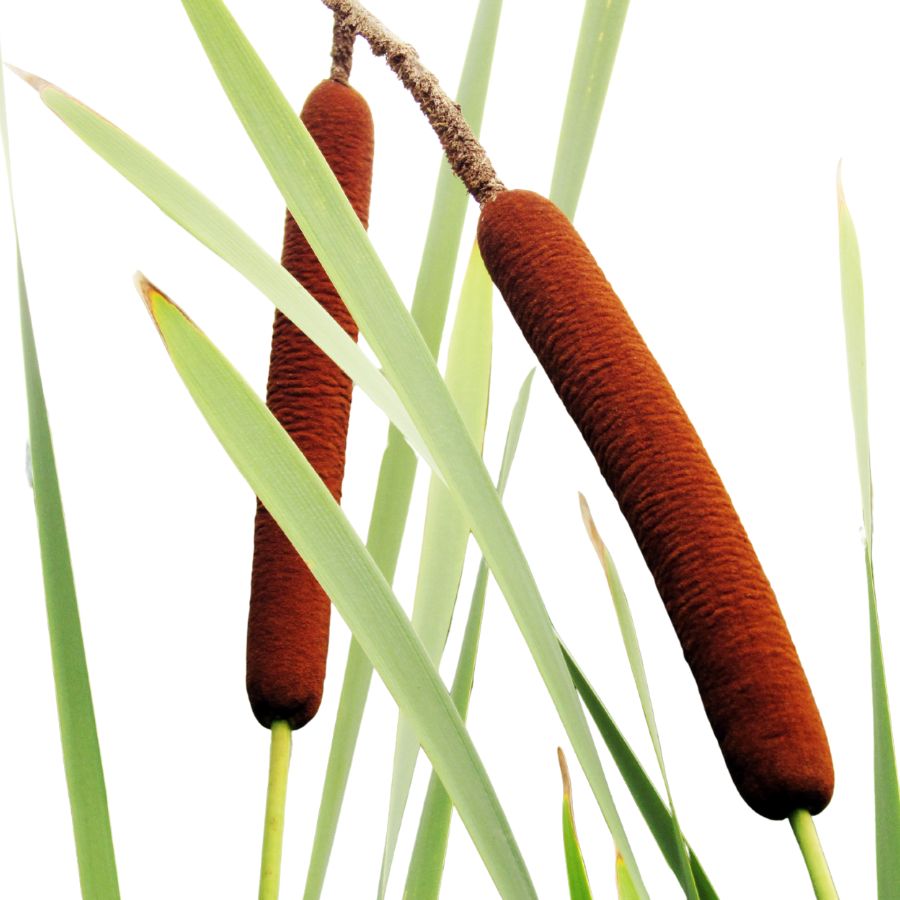
Cattails grow tall in shallow water and feature long, narrow leaves with brown, sausage-like flower heads that help identify them. You can eat the tender shoots, the young green flower spikes, and the starchy rhizomes underground.
The shoots are often compared to cucumbers or hearts of palm and can be used raw in salads. The flower spikes are more enjoyable when steamed or boiled before they toughen.
Rhizomes have more calories than the rest of the plant, but they’re fibrous and need to be cooked or processed into flour to be useful. Avoid picking anything that looks similar but lacks the brown flower head—iris and other lookalikes can be harmful if ingested.
Cattails aren’t sold for much commercially, but their abundance and the number of usable parts make them a solid wild food source. Foragers value them for how much food they provide from one plant, even if they won’t fetch a high price.
Oyster Mushroom (Pleurotus ostreatus)
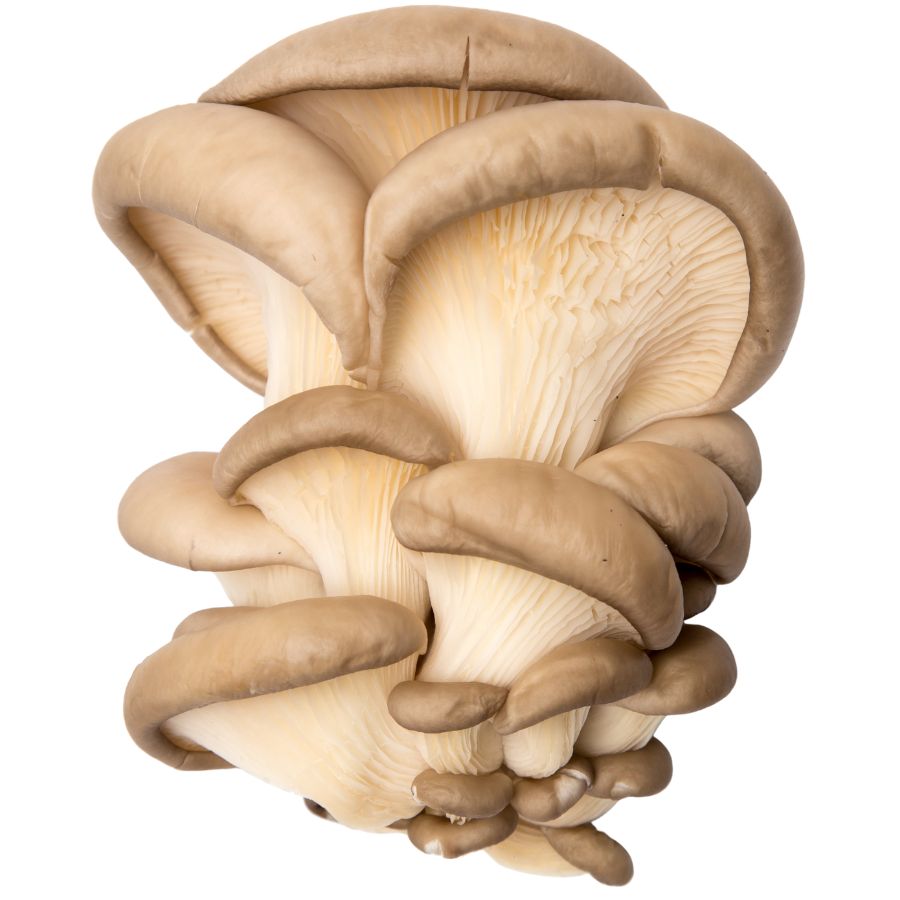
Look for oyster mushrooms growing directly out of logs or stumps, forming overlapping clusters of pale, fluted caps with white gills that stretch downward. The cap shape is typically rounded like a fan or an oyster shell, with a smooth, soft texture.
These mushrooms are completely edible except for any tough or fibrous sections near the base. When cooked, they have a mild, savory flavor and absorb sauces well, making them ideal for stir-fries, pasta, and soups.
They can be confused with toxic lookalikes like the false oyster, which has darker gills and a tougher consistency, or the jack-o’-lantern, which is bright orange and grows from the ground. Checking the substrate—wood only—is one of the easiest ways to avoid mistakes.
Fresh oyster mushrooms usually sell for $10–$20 per pound fresh depending on variety and quality. Their value comes not only from taste and versatility but also from a short shelf life that keeps them in demand from local growers.
Morel Mushroom (Morchella spp.)
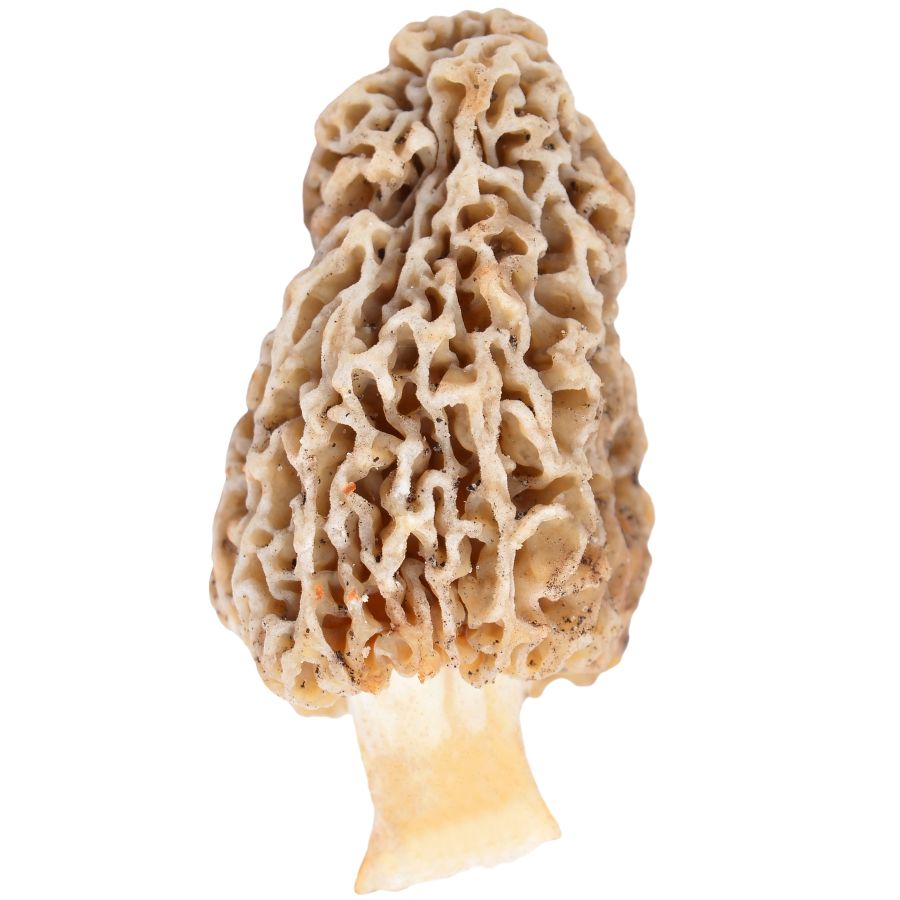
Morel mushrooms have a honeycomb-like surface with deep pits and ridges. The cap is fully attached to the stem, which helps set them apart from dangerous lookalikes like false morels that often have wrinkled, lobed caps and loose or cottony interiors.
The rich, nutty flavor and slightly chewy texture make morels a favorite in high-end kitchens. Many people sauté them in butter, stuff them, or dry them for later use because they hold their flavor extremely well.
Always cook morels thoroughly because raw ones can cause stomach upset, even when they look perfectly normal.
Morels are highly prized by chefs and home cooks, sometimes selling for over $50 per pound fresh and even more when dried.
Part of what makes morels so valuable is how hard they are to cultivate and find. They often grow in specific, unpredictable places, and their short harvesting window drives up both the demand and the price.
Black Trumpet (Craterellus fallax)
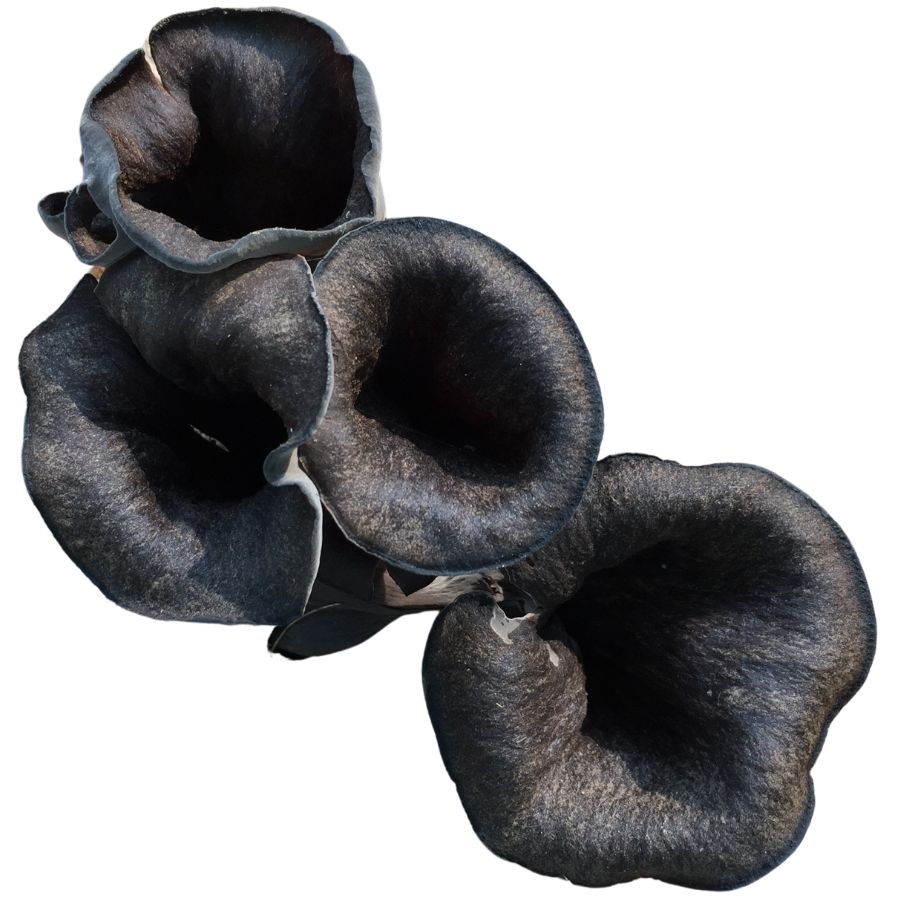
Black trumpet mushrooms have a thin, funnel-shaped body that ranges from deep gray to charcoal black, often with a wrinkled or wavy texture. They grow hollow from stem to top, with smooth undersides instead of gills.
The entire fruiting body is edible, and it cooks down quickly, releasing a deep, smoky aroma. Their texture is tender and slightly chewy, making them a favorite in risottos, cream sauces, or simply sautéed with butter.
One of the biggest dangers comes from confusing black trumpets with inedible cup fungi, which are often thicker and lack the delicate, papery walls. Another lookalike, devil’s urn, appears earlier in the season and has a more rigid, vase-like shape.
Black trumpets dry exceptionally well and retain their flavor for months, which boosts their market price. In the right places, they can sell for $30 to $50 per pound when dried, making them highly sought after by chefs and foragers alike.
Pawpaw (Asimina triloba)
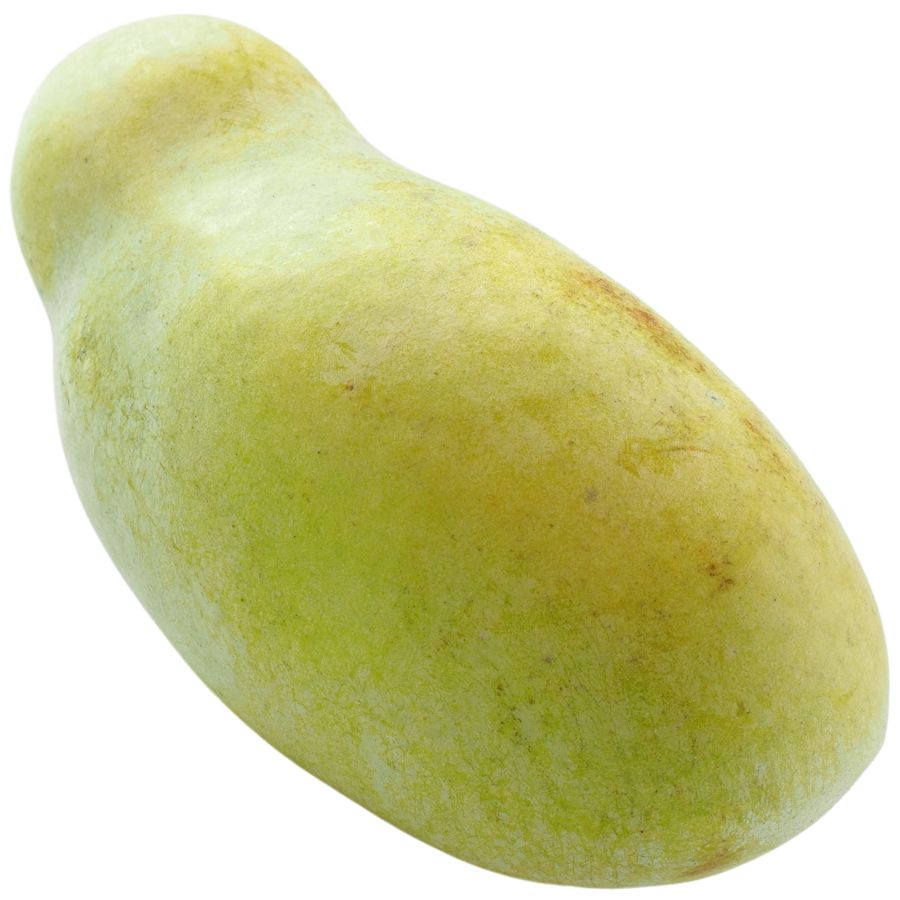
Pawpaw produces a green, mango-shaped fruit with soft yellow flesh inside and a taste that’s hard to forget. The flavor is rich and tropical, and the texture is thick like custard.
You’ll want to avoid the seeds and skin, but the pulp is edible and highly sought after. Some people cook it down into jams while others prefer it raw, straight from the peel.
There are other fruits in wooded areas that look similar, but pawpaw’s smell and size help separate it from anything potentially inedible. The way its fruits grow in clusters is also a giveaway.
Pawpaw isn’t commonly found in grocery stores, which makes it valuable for small growers and foragers. In-season, it can fetch a premium price at specialty food shops and farmers markets.
Chicken of the Woods (Laetiporus sulphureus)
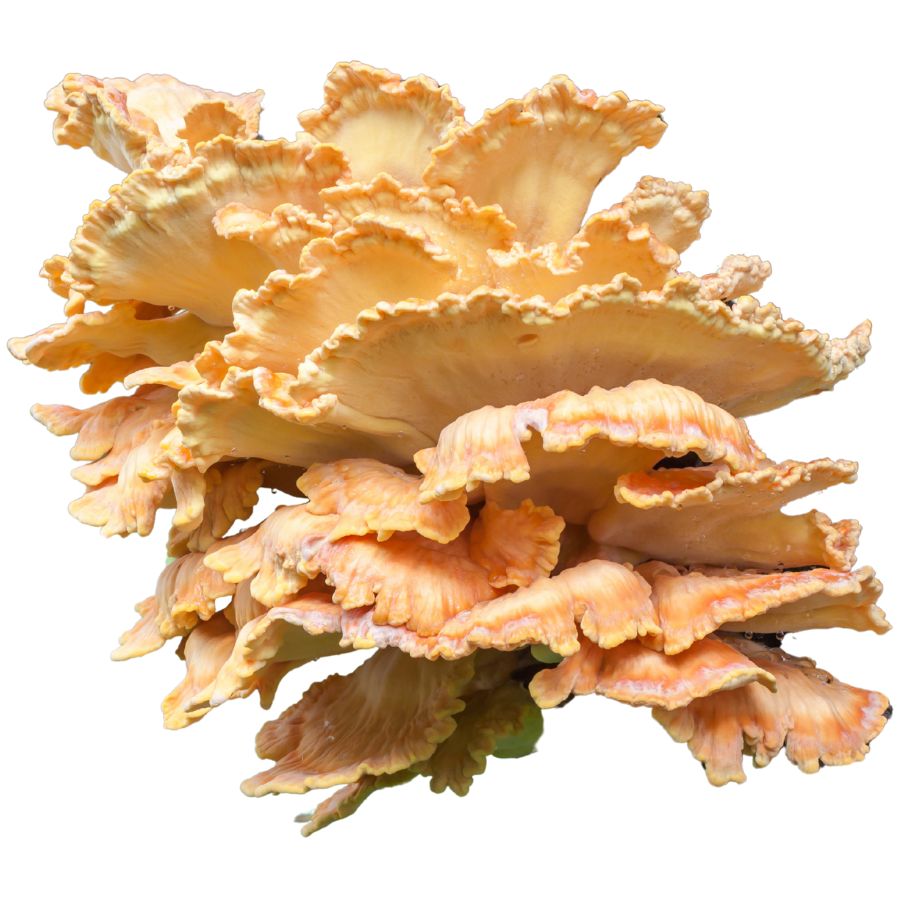
Chicken of the woods, also called sulfur shelf, grows in thick, shelf-like clusters with bright orange tops and yellow undersides. It develops on hardwood trees and fallen logs, forming a dense and slightly spongy mass.
Only the soft outer edges are typically eaten, while the older inner parts become tough and unpleasant. Its texture is meaty and chewy, and many people say it tastes a lot like chicken.
This mushroom doesn’t have gills and instead features tiny pores underneath, which helps separate it from toxic lookalikes like the jack-o’-lantern mushroom. The jack-o’-lantern has gills and glows faintly in the dark, which chicken of the woods does not.
Chicken of the woods is often sautéed, fried, or frozen for later, and can fetch a decent price at markets when fresh and tender. Just be careful—some people have reported mild stomach upset, especially when it’s harvested from conifers.
Where to Find Valuable Forageables in the State
Some parts of the state are better than others when it comes to finding valuable wild plants and mushrooms. Here are the different places where you’re most likely to have luck:
| Plant | Locations |
| Muscadine (Vitis rotundifolia) | – Edisto Island Open Land Trust – Hilton Head Island forest trails – The Happy Berry farm (Six Mile) |
| Garlic Mustard (Alliaria petiolata) | – Croft State Park – Lake Conestee Nature Preserve – Woods near Saluda Riverwalk (Columbia) |
| Chanterelle (Cantharellus cibarius) | – Edisto Island Open Land Trust – Harbison State Forest – Jones Gap State Park |
| Yaupon Holly (Ilex vomitoria) | – Huntington Beach State Park – Botany Bay Heritage Preserve – St. Phillips Island |
| Black Walnut (Juglans nigra) | – Table Rock State Park – Sumter National Forest (Enoree District) – King Creek Falls Trail area |
| Maypop (Passiflora incarnata) | – Congaree National Park – Edisto Nature Trail – South Carolina Botanical Garden |
| Dryad’s Saddle (Cerioporus squamosus) | – Congaree National Park – Paris Mountain State Park – Santee State Park |
| Lion’s Mane (Hericium erinaceus) | – Sumter National Forest (Andrew Pickens District) – Landsford Canal State Park – Jocassee Gorges Management Area |
| Elderberry (Sambucus canadensis) | – Congaree National Park – ACE Basin National Wildlife Refuge – Lynch’s Woods Park |
| American Persimmon (Diospyros virginiana) | – Table Rock State Park – Harbison State Forest – Croft State Park |
| Milkweed (Asclepias syriaca) | – Lake Hartwell State Park – Savannah River Site public lands – South Carolina Botanical Garden |
| Cattail (Typha latifolia) | – Congaree National Park – Bear Island Wildlife Management Area – Lake Moultrie public wetlands |
| Oyster Mushroom (Pleurotus ostreatus) | – Harbison State Forest – Sumter National Forest (Tyger River area) – Florence Rail Trail woods |
| Morel Mushroom (Morchella spp.) | – Sumter National Forest (Long Cane District) – Table Rock State Park – Oconee Station State Historic Site |
| Black Trumpet (Craterellus fallax) | – Francis Marion National Forest – Lake Jocassee area trails – Caesar’s Head State Park |
| Pawpaw (Asimina triloba) | – Congaree National Park – Oconee State Park – Savannah River Bluffs Heritage Preserve |
| Chicken of the Woods (Laetiporus sulphureus) | – Sumter National Forest (Enoree District) – Paris Mountain State Park – Keowee-Toxaway State Park |
When to Forage for Maximum Value
Every valuable wild plant or mushroom has its season. Here’s a look at the best times for harvest:
| Plants | Valuable Parts | Best Harvest Season |
| Muscadine (Vitis rotundifolia) | Grapes, leaves | August – September |
| Garlic Mustard (Alliaria petiolata) | Leaves, shoots, roots | February – April |
| Chanterelle (Cantharellus cibarius) | Mushroom (fruiting body) | June – August |
| Yaupon Holly (Ilex vomitoria) | Leaves | October – December |
| Black Walnut (Juglans nigra) | Nuts, husks | September – November |
| Maypop (Passiflora incarnata) | Fruit, leaves | August – October |
| Dryad’s Saddle (Cerioporus squamosus) | Mushroom (young fruiting body) | April – May, September |
| Lion’s Mane (Hericium erinaceus) | Mushroom (fruiting body) | October – November |
| Elderberry (Sambucus canadensis) | Flowers, berries | June (flowers), August (berries) |
| American Persimmon (Diospyros virginiana) | Fruit | October – November |
| Milkweed (Asclepias syriaca) | Shoots, flower buds, immature pods | April – July |
| Cattail (Typha latifolia) | Shoots, flower spikes, pollen | March – July |
| Oyster Mushroom (Pleurotus ostreatus) | Mushroom (fruiting body) | October – November, March |
| Morel Mushroom (Morchella spp.) | Mushroom (fruiting body) | March – May |
| Black Trumpet (Craterellus fallax) | Mushroom (fruiting body) | July – September |
| Pawpaw (Asimina triloba) | Fruit | August – September |
| Chicken of the Woods (Laetiporus sulphureus) | Mushroom (young fruiting body) | September – November |
One Final Disclaimer
The information provided in this article is for general informational and educational purposes only. Foraging for wild plants and mushrooms involves inherent risks. Some wild plants and mushrooms are toxic and can be easily mistaken for edible varieties.
Before ingesting anything, it should be identified with 100% certainty as edible by someone qualified and experienced in mushroom and plant identification, such as a professional mycologist or an expert forager. Misidentification can lead to serious illness or death.
All mushrooms and plants have the potential to cause severe adverse reactions in certain individuals, even death. If you are consuming foraged items, it is crucial to cook them thoroughly and properly and only eat a small portion to test for personal tolerance. Some people may have allergies or sensitivities to specific mushrooms and plants, even if they are considered safe for others.
Foraged items should always be fully cooked with proper instructions to ensure they are safe to eat. Many wild mushrooms and plants contain toxins and compounds that can be harmful if ingested.

